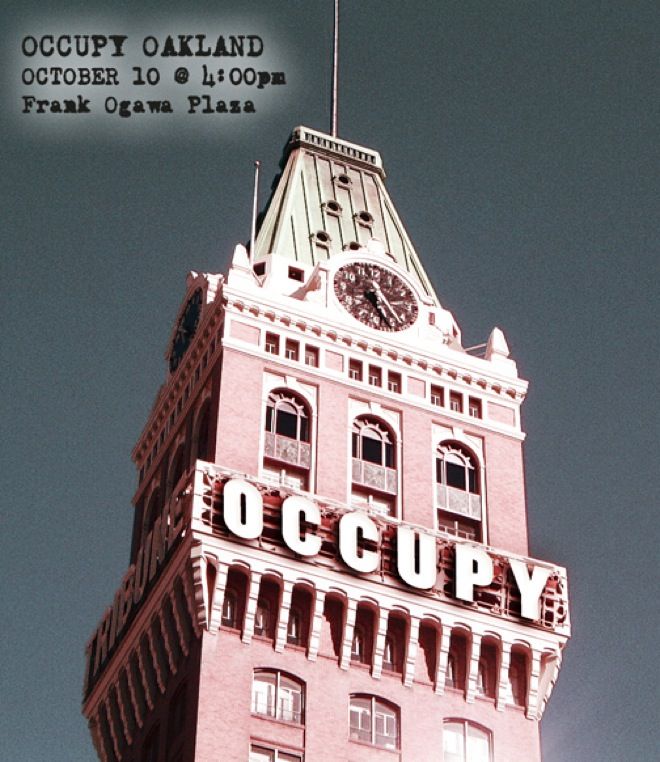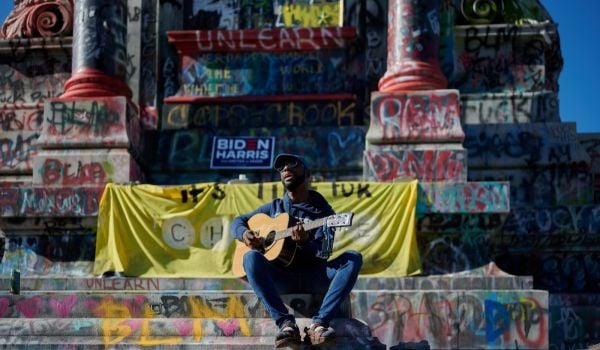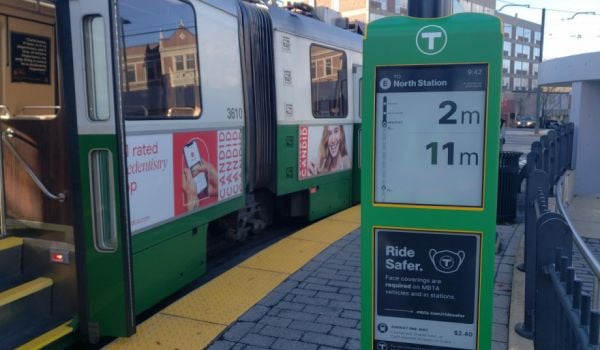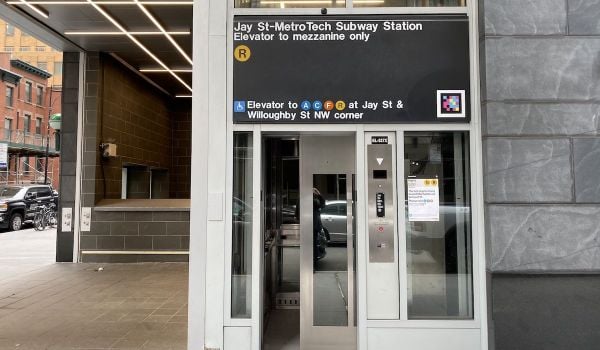It’s a funny thing seeing your city engulfed in protestors and tear gas, again. But it’s also encouraging to see a peaceful response emerge over the following days. There’s hope for Oakland and democracy, yet.
I live in Downtown Oakland. Moving to any part of Oakland automatically makes you an ambassador for the city. “Yes, I like Oakland more than Berkeley or San Francisco.” “Sure, I’m careful, but generally I feel very safe.” “There are a lot of great restaurants, galleries, and festivals – it’s a very exciting place to be.” Not only do we have the best bars and restaurants, but Downtown Oakland is especially exciting right now.
You might have heard: for weeks, nearly a hundred tents filled tiny Frank Ogawa Plaza in front of city hall. At 4:45 am Tuesday, October 25, 200 police officers from across the Bay Area moved in and cleared the camp. Within 30 minutes, a hundred people were arrested. Immediately, protest supporters began calling for a march to retake the plaza at 4 pm. About 500 people showed up and filled the plaza. By 9 pm, about a thousand people stood in downtown. Police used tear gas, rubber bullets, and flash grenades to disperse the crowd over the next few hours.
What was it like? Here’s almost an hour of the confrontation with live commentary from Matt Nelson, a community organizer with Color of Change.
The next morning, bus service was rerouted to avoid downtown. BART entrances were closed. The numbers slowly came in: seventy people were arrested, and 10 more were hospitalized (including a Veteran for Peace whose skull was fractured by a tear gas canister). A fog of tear gas lingered long enough to welcome the early commuters.
Strangely, the protest actually grew the next night. On Wednesday night, crowd estimates of Frank Ogawa Plaza, ranged from 1,500 to 3000. Across the Bay, rumors swirled that Occupy San Francisco would be shut down next. Police arrived, but performed only “training exercises”. Regular attendees claimed the number of protesters nearly doubled as new supporters rallied to defend the occupation. Dozens of local and national media were visible. There was talk of protesters crossing the Bay Bridge, but the crowd talked itself down (the bridge is 4.5 miles long). The crowd managed to subdue the sparse troublemakers, and the neither police force engaged. Nothing came close to the chaos of the previous night.
As it became clear the police were now willing to allow peaceful assembly, Occupy Oakland restarted its messy democratic process. Yesterday over 300 people attended a daily General Assembly in Frank Ogawa. Organizers were eager to move ahead with a vote for a general strike, but wary to do so in anything with less than consensus. They eventually broke the crowd out into working groups to strategize on various elements of the strike. Many people, either uninterested or shy, left.
The most exciting moment of the night came around 9:30 pm, when beleaguered Mayor Jean Quan arrived to address the crowd. Already losing popularity before Tuesday, she was out of town when she gave the order to clear with plaza. Rumors swirled that she was going to arrive at 6, and then 6:30, and then 7. When the moment finally came, protestors ran her out. Many protestors argued she should be given only the two minutes allowed all members of the public, while others shouted “go home” and “citizen’s arrest”.
By email later, Quan wrote: “I am deeply saddened about the outcome on Tuesday. It was not what anyone hoped for, ultimately it was my responsibility, and I apologize for what happened.”
What do I think will happen?
Expect the wild cards that want to scream at cops and start fights to grow bored by consensus building. With any luck, they’ll stay home. Reducing the presence of heavily armed riot police allows protestors to discourage aggression within the assemblies. Giving the Occupy Wall Street camps an air of legitimacy will deprive a lot of instigators of their excuses. I’m hopeful that if Oakland does have a general strike on November 2, it will be peaceful.
Am I being too optimistic? Maybe, but veteran Oaklanders may notice that very few businesses have boarded up their windows. The only window broken Tuesday night was shot by a police officer’s rubber bullet. This may not seem like much, but my downtown office building was evacuated a two hours before an organized protest of Johannes Mehserle‘s light sentencing (the white BART officer who shot an unarmed and subdued black man in 2009). Local businesses are a zealously cautious indicator of the public mood, and they seem to think things will remain calm, or at least non-destructive.
On the other hand, peace isn’t as exhilarating to the media as Qaddafi-style brutality. Press coverage, and thus political power, will evaporate more quickly than the equity problems to be solved.
There are more things I don’t know.
Will Mayor Quan lose her job over this? Tuesday afternoon, supporters of her electoral rival Don Perata filed to start a recall petition. After she ordered the police action, protestors began calling for her recall, too. Strangely, Don Perata’s supporters found her too soft on public safety – Perata would almost certainly be less willing to negotiate with protestors. Third place candidate Rebecca Kaplan would fare better with the protestors in an election, but is it worth risking a Perata mayorship?
How will this prolonged occupation and police response affect Oakland’s struggling economy? After the protests following Johannes Mehserle’s sentencing, Clorox moved its 700 employees out of Downtown Oakland and into the city of Pleasanton. Smaller businesses, like the restaurants that line Frank Ogawa Plaza, are undoubtedly suffering from a decline in foot traffic. Will nightly helicopters and prolonged civil unrest further hinder the city’s attempt to draw residents back to downtown? Will they at least help me negotiate a lower rent?
How will it end?
Given Quan’s statements over the last few days, it looks like the protestors now have a chance to organize some concrete demands and deliver them to an attentive audience. Here’s hoping they can articulate clear, actionable demands (suggestions here) while everyone is still listening, without having to get tear gassed again.
Oakland is the perfect city to represent this movement. The events of Tuesday night almost entirely eclipsed an Oakland Unified School District vote to close five public schools. The nation-wide and global economic crises are very real in Oakland, but so are the self-made opportunities and tightly knit communities that everyone will need to overcome the challenges ahead. Hyperlocal news site Oakland Local gives a platform to community voices that need to be heard. City Slicker Farm volunteers create backyard gardens for families that need access to healthy and fresh food. With Mayor Quan’s help, Oakland residents celebrated National Night Out this summer with 559 neighborhood block parties. Oakland residents are familiar with self-reliance. We’re already working together to strengthen our communities.
For whatever other political disagreements we have, this city, more than most, represents the pressure on the middle class, the foreclosure crisis, and shrinking opportunity.
Occupy Wall Street and Occupy Oakland want Washington and Sacramento to get their acts together. President Obama’s new student debt plan is a start, but we need cities like Oakland to remind us that we can do better by working together.















